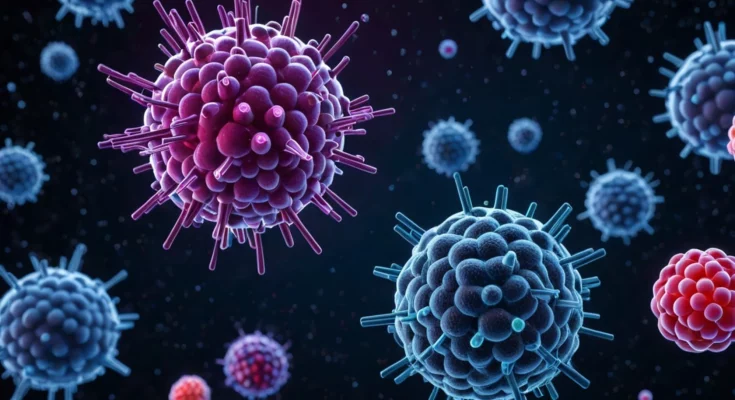Welcome to the forefront of scientific innovation, where artificial intelligence (AI) is transforming the way we understand and design enzymes. A recent breakthrough published in Science reveals how researchers are using AI to engineer brand-new enzymes capable of executing complex multi-step chemical reactions. This advancement holds tremendous potential for various fields, including biochemical applications and industrial processes, especially plastic recycling.
The Challenge of Designing Enzymes
Historically, attempts to create enzymes from scratch often resulted in products that could only perform a single step of a reaction. Traditional approaches involved modifying existing enzyme structures, which, while fruitful in certain contexts, left significant gaps in efficiency and functionality. The analogy provided by study co-author Anna Lauko, a protein designer at the University of Washington, illustrates this challenge well: “It is like going to the thrift store and buying a suit; that suit probably won’t fit you perfectly.”
The limitations of conventional enzyme design methods have spurred the development of novel approaches leveraging AI technology. This new methodology stands out as a game-changer in the field of enzyme engineering.
Utilizing AI in Enzyme Design
- RFdiffusion: An AI tool specifically created to generate new enzyme structures from scratch.
- PLACER: A deep neural network designed to optimize the structural designs by modeling atomic locations.
In this groundbreaking study, researchers combined multiple machine-learning strategies to overcome previous limitations. The resulting newly formed enzymes were found to be an impressive 60,000 times more effective at accelerating crucial reactions than their predecessors. This tells us that the future of enzyme engineering could be more efficient and versatile than ever before.
The Four-Step Reaction: Serine Hydrolysis
One of the critical breakthroughs from this research involved the successful design of enzymes that could undergo a vital four-step chemical reaction known as serine hydrolysis. This specific reaction is responsible for a range of biological processes, including:
- Digestion of food
- Metabolizing fats
- Blood clotting
By mimicking the behavior of natural enzymes, particularly serine hydrolases, researchers aimed to enhance the efficiency, scope, and effectiveness of these man-made catalysts.
How Machine Learning Optimizes Enzyme Functionality
The study demonstrates innovation not only in the design methodologies but also in the conceptualization of enzyme functionality. The integration of machine-learning tools allowed for a detailed examination of the enzyme’s active sites, which are essential for facilitating reactions.
Each step of the serine hydrolysis reaction went through rigorous testing to ensure that the active sites interacted harmoniously with the molecules involved. As noted by Huimin Zhao, a synthetic biologist at the University of Illinois, this approach has marked a significant milestone in enzyme engineering. It illustrates that not only can we now design enzymes with high activity, but they can also be practically applied in various industries, opening doors to brand-new possibilities.
Broader Implications of AI-Designed Enzymes
The potential applications of these novel enzymes extend far beyond simple laboratory processes. The accelerated four-step reaction designed through AI engineering has implications in:
- Biotechnology: Producing efficient enzymes for drug synthesis or biocatalysis.
- Environmental Science: Creating enzymes for the recycling of plastics and other materials.
- Agriculture: Developing biofertilizers and pesticides that are more eco-friendly and tailored to specific agricultural needs.
Incorporating AI in enzyme design not only promises high efficiency but also suggests a pathway towards sustainable practices, particularly in plastic waste management.
The Future of AI in Protein Engineering
As the field progresses, the possibility of designing more complex proteins could soon become a reality. AI tools like AlphaFold have already shown promise in predicting protein structures, and researchers are calling upon these technologies to venture into designing proteins that could transform medicine and other biotechnological fields.
However, the ethical implications and safety protocols tied to AI-created proteins need careful consideration. As scientists utilize every advance in machine learning, it is crucial to establish guidelines that ensure the responsible development of these powerful tools.
Conclusion
The use of AI to engineer life-like enzymes marks a revolutionary shift in biochemistry and molecular biology. By overcoming prior limitations in enzyme design, researchers are paving the way for practical applications that address pressing challenges in various sectors. With continued innovation and a commitment to responsible research, we stand on the brink of an enzymatic revolution that holds the promise of making our industries more efficient, sustainable, and environmentally friendly.



